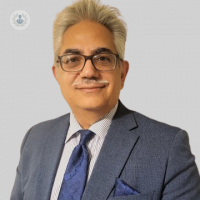Ventricular assist device VAD
Mr Franco Ciulli - Cardiothoracic surgery
Created on: 11-13-2012
Updated on: 10-23-2023
Edited by: Kate Forristal
What is a ventricular assist device?
Ventricular assist devices are small devices that are implanted in the heart to help the heart pump blood from the ventricles to the rest of the body.
The device is a kind of mechanical pump and is used in people who have a weak heart or who have heart failure.
A cardiac surgeon will carry out this procedure.

The device is implanted during an open heart surgery which is done under general anaesthetic. The procedure has its risks and lasts between four and six hours.
There are three types of ventricular assist devices; a left ventricular assist device, a right ventricular assist device, and a biventricular assist device which helps both sides of the heart.
Why would you do it?
Ventricular assist devices are used for different reasons:
- The patient needs a heart transplant. The device is implanted temporarily until a donor heart is available, this is known as a bridge to transplantation. The device enables blood to continue to be pumped through the heart as it is unable to do so unaided.
- If the patient is not eligible for a transplant due to other conditions. In a lot of cases, the ventricular assist device improves other organ function or the conditions that made having a transplant unfeasible.
- The patient is not a good candidate for a transplant. Ventricular assist devices are being increasingly used as a long term solution for people who are not a candidate for a transplant, people over 65 years old for example.
- The patient’s heart rate may return to normal, which is known as temporary heart failure. In these cases, the device is implanted until the myocardium, heart muscle, is able to pump blood. The device may be temporarily placed after heart surgery.
What does it involve?
Ventricular assist devices are implanted through open heart surgery, which involves significant risks for the patient.
During the surgery, the patient will be connected to a ventilator through a tube to the lungs.
An incision will be made in the chest for the ventricular assist device to be implanted. Medications may be used beforehand to stop the heart, in which case a heart-lung machine will be used to ensure the blood remains oxygenated.
The surgical team will then implant the ventricular assist device. It will work with a tube that carries blood from the left ventricle to a pump, which then transports it to the aorta.
When the device is seen to work properly, the heart-lung bypass machine will be turned off.
How to prepare for it
Medical tests that are carried out when assessing the condition include; a chest radiography, echocardiography, an electrocardiogram, and cardiac catheterisation.
The medical team will show the patient, and their family, how to use the device and learn how to live with it.
Post-operative care
After the procedure the patient will be in the intensive care unit for a few days. They will be given medication, fluid, and food intravenously. There may be issues with the lungs, in these cases patients are put on a ventilator a few days.
The medical team will guide the patient through recovery until they can go home.
The patient will need to take antibiotics and anticoagulants after the procedure. This is to avoid infections and other complications that could arise.
The patient will need to have follow-up appointments, tests, and be closely monitored. The first month after the procedure check-ups will be done on a weekly basis to ensure the device is working correctly.


